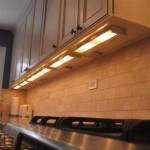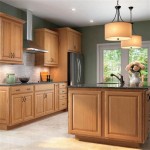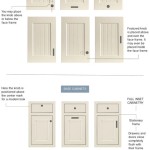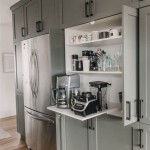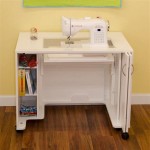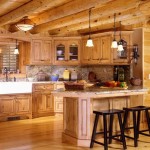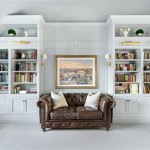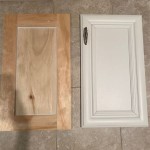The Perfect Dining Room Corner Cabinets For Ample Storage and Style
Corner cabinets represent a strategic solution for maximizing space and enhancing the aesthetic appeal of a dining room. These units, designed to fit neatly into corners, offer a range of benefits, from providing additional storage to serving as a focal point within the room's design. Selecting the perfect corner cabinet for a dining room requires careful consideration of several factors, including size, style, material, and functionality. This article will explore key aspects to consider when choosing a corner cabinet that perfectly complements a dining room, providing ample storage and adding a stylish touch.
Assessing Space and Dimensions for Ideal Fit
Before embarking on the search for a corner cabinet, a precise assessment of the available space within the dining room is essential. This involves measuring the corner where the cabinet will be placed, taking into account both the floor space and the height. The dimensions of the cabinet should be carefully considered to ensure a proper fit without overwhelming the room or obstructing walkways. A cabinet that is too large can make the room feel cramped, while one that is too small might not provide sufficient storage or make the desired visual impact.
The shape of the corner also plays a role in determining the ideal cabinet design. While most corners are perfectly square, some may have slight irregularities or be angled differently. In such cases, it may be necessary to opt for a custom-built cabinet that is specifically tailored to the unique dimensions of the corner. This ensures a seamless fit and maximizes the use of available space. Consider also the placement of electrical outlets and light switches in relation to the intended cabinet location. Accessibility to these features should be maintained for convenience and safety.
Furthermore, the overall layout of the dining room should be taken into account. The position of existing furniture, such as the dining table, chairs, and sideboards, will influence the optimal placement and size of the corner cabinet. It is important to ensure that the cabinet does not impede the flow of traffic or create visual clutter. A well-placed corner cabinet should seamlessly integrate into the existing décor and enhance the overall functionality of the dining room.
Selecting a Style That Complements Existing Decor
The stylistic compatibility of the corner cabinet with the existing dining room decor is paramount. The choice of style should reflect the overall aesthetic of the room, whether it is traditional, modern, rustic, or eclectic. A mismatch in styles can create a jarring effect and detract from the overall harmony of the space. Consider the existing furniture, wall colors, flooring, and architectural details when selecting the style of the corner cabinet.
For a traditional dining room, a corner cabinet with classic features such as raised panel doors, ornate detailing, and a rich wood finish would be a suitable choice. These cabinets often feature intricate carvings, antique hardware, and elegant glass panels. A traditional corner cabinet can serve as a statement piece that enhances the formal ambiance of the dining room.
In a modern dining room, a corner cabinet with clean lines, minimalist design, and a neutral color palette would be more appropriate. These cabinets often feature sleek surfaces, simple hardware, and a lack of ornate details. A modern corner cabinet can provide a subtle yet functional storage solution without overwhelming the contemporary aesthetic of the room. Materials such as metal, glass, and engineered wood are often used in modern corner cabinets.
For a rustic dining room, a corner cabinet made from reclaimed wood or featuring a distressed finish would be a fitting choice. These cabinets often have a natural, weathered appearance that adds warmth and character to the space. Rustic corner cabinets may also incorporate elements such as wrought iron hardware or exposed wood grain. The key is that it feels and blends in naturally.
Ultimately, the style of the corner cabinet should be a deliberate choice that enhances the overall design of the dining room. It should complement the existing decor and contribute to the desired ambiance of the space. Prior to choosing a style, gather images of dining rooms you like and note the specifics of what you appreciate. This will help you in your cabinet search.
Material and Construction: Prioritizing Durability and Longevity
The material and construction of a corner cabinet are critical factors that determine its durability, longevity, and overall quality. Selecting a cabinet made from high-quality materials and featuring solid construction techniques ensures that it will withstand the rigors of daily use and maintain its appearance over time. Consider the various wood types, finishes, and hardware options available when choosing a corner cabinet.
Solid wood is a popular choice for corner cabinets due to its strength, durability, and natural beauty. Hardwoods such as oak, maple, cherry, and walnut are particularly well-suited for cabinet construction. These woods are resistant to scratches, dents, and other types of damage. Solid wood cabinets also tend to have a timeless appeal that can enhance the value of the dining room.
Wood veneer is another commonly used material for corner cabinets. Veneer consists of a thin layer of wood that is adhered to a substrate such as plywood or particleboard. Veneer cabinets can offer a similar appearance to solid wood cabinets at a lower cost. However, it is important to choose a high-quality veneer to ensure durability and resistance to wear and tear. Look for thick veneers and a well-constructed substrate.
Engineered wood products such as plywood and particleboard are also used in the construction of corner cabinets. These materials are often more affordable than solid wood and can be more resistant to warping and cracking. However, they may not be as durable or aesthetically pleasing as solid wood. If choosing an engineered wood cabinet, look for one with a durable finish and solid edge banding to protect against moisture and damage.
The construction techniques used to assemble the corner cabinet are also important. Look for cabinets with strong joints, solid hardware, and a well-applied finish. Dovetail joints, mortise-and-tenon joints, and screw-and-glue construction are all signs of quality craftsmanship. The finish should be smooth, even, and resistant to scratches and stains. Inspect the hardware for durability and ease of use. The cabinet must be made with quality material and construction or it will not last long.
Optimizing Functionality and Storage Solutions
Beyond its aesthetic appeal, a corner cabinet should provide functional storage solutions that meet the specific needs of the dining room. Consider the types of items that will be stored in the cabinet, such as dishes, glassware, linens, or serving pieces, and choose a cabinet with appropriate shelving, drawers, and compartments. A well-designed corner cabinet can help to keep the dining room organized and clutter-free.
Shelving is a fundamental feature of most corner cabinets. Adjustable shelves offer flexibility in terms of storage height and can accommodate a variety of items, from tall vases to stacks of plates. Fixed shelves provide stability and can be useful for storing heavier items. Consider the depth of the shelves to ensure that they can accommodate the items that will be stored on them.
Drawers provide convenient storage for smaller items such as silverware, napkins, and placemats. Look for cabinets with drawers that slide smoothly and have sturdy construction. Dovetail joints and solid wood drawer boxes are signs of quality craftsmanship. Consider the number and size of the drawers to ensure that they meet the specific storage needs of the dining room.
Cabinets with glass doors can be used to display decorative items or cherished collections. Glass doors can also help to break up the solid surface of the cabinet and add visual interest to the dining room. Consider the type of glass used in the doors, such as clear glass, frosted glass, or leaded glass, and choose a style that complements the overall decor of the room.
Interior lighting can further enhance the functionality of a corner cabinet. LED strip lights or spotlights can be used to illuminate the contents of the cabinet, making it easier to find items and creating a more inviting display. Consider adding a dimmer switch to control the intensity of the lighting. Ensure to measure and consider what you need to store in the cabinet so you can choose the right cabinet that will have the correct size and storage solutions.
Considering Budget and Value
The budget allocated for a corner cabinet is a crucial factor in determining the available options. Corner cabinets are available in a wide range of price points, depending on the materials, construction, style, and features. It is important to set a realistic budget before beginning the search for a corner cabinet and to prioritize the features that are most important. While it may be tempting to opt for the least expensive option, it is often more cost-effective in the long run to invest in a high-quality cabinet that will last for many years.
Evaluate the cost-benefit ratio of different corner cabinet options. Consider the materials, construction, style, and features of each cabinet and weigh them against the price. Look for cabinets that offer a good balance of quality, functionality, and aesthetics. Read reviews from other customers to get an idea of the cabinet's durability and performance.
Consider the potential return on investment of the corner cabinet. A well-chosen corner cabinet can enhance the value of the dining room and add to the overall appeal of the home. It can also provide valuable storage space and help to keep the room organized and clutter-free. A high-quality corner cabinet can be a wise investment that pays off in the long run.
Shop around and compare prices from different retailers. Online retailers, furniture stores, and antique shops all offer a variety of corner cabinets. Take the time to research different options and compare prices to find the best deal. Be sure to factor in shipping costs and any applicable taxes when comparing prices.
By carefully considering the budget and value of different corner cabinet options, it is possible to find a cabinet that meets the specific needs of the dining room without breaking the bank. A well-chosen corner cabinet can be a valuable addition to the home, providing ample storage and enhancing the overall aesthetic appeal of the space.

Kitchen Corner Decorating Ideas Tips Space Saving Solutions

10 Modern Dining Room Cabinet Designs Design Cafe

Ideas For Dining Room Built Ins Marissa Cal Home

Top 16 Types Of Corner Dining Sets
Space Saving Corner Dining Sets Furniture Village

25 Best Breakfast Nook Ideas To Start Your Morning Off Right

10 Modern Dining Room Cabinet Designs Design Cafe

Ideas For Dining Room Built Ins Marissa Cal Home

Everything About Banquette Seating The Made Home

Kitchen Corner Decorating Ideas Tips Space Saving Solutions
Related Posts

